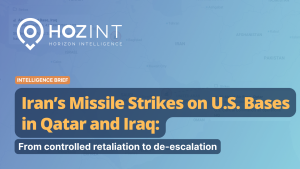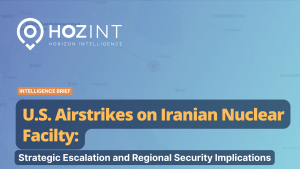Over the past year civil aviation has suffered major terrorist attacks that have caused both economic and psychological impact on the sector and civil society. Recent threats against airports and civil aviation companies highlight how terrorists see in the transport industry a favoured target to instil fear and deep disruption. There is very little room for novelties in the type, scale and means through which the industry can be targeted as the list appears to be exhaustive. However, airports across the world differ in a large extent in the measures put in place to mitigate all of the potential assaults at the same time. The extent to which countries have comprehensive security measures in place depends largely on their affluence and past record of attacks, and as a result there are serious security discrepancies between countries and between regional and main airports within the same state. Once terrorists have gained access to the resources they require to launch a strike against a soft-target, no security measure can guarantee the mitigation of all loss of life. Efforts should take places as part of a broad and wholesale security revamp of all modes of transport rather than limited actions that will just sway terrorist threats to other less guarded targets. The security of the civil aviation industry can be boosted via increasing intelligence on specific threats as well as improving the overall crisis management cycle with regard to mitigation, prevention, preparedness, response and recover.
[su_button url=”https://www.hozint.com/wp-content/uploads/2016/10/Terrorism-Aviation-Security-1.pdf” target=”blank” style=”flat” background=”#5aaab5″ size=”5″ wide=”yes” center=”yes”]Download PDF[/su_button]
Table of Contents
- The analysis of attacks
- Measures to improve security in operations linked to the Aviation industry and its infrastructure
- Screening
- Standoff Zones
- Assigning clear operational roles
- Situational Crisis Training
III. Understanding the limitations of ‘immediately enforceable’ security measures
- National and International consistency
- Terrorist adaptability and innovation
- Assailant capabilities and training vary
- Resources are finite
Recent attacks
- On October 31st, 2015, Russian Metrojet / Kogalymavia flight 9268 on its way from Sharm el-Sheikh to St. Petersburg crashed in North Sinai region in Egypt killing 224 people.[ii]The Islamic State-affiliated “Sinai Province” terrorist group (formerly known as Ansar Beit al-Maqdis) claimed responsibility.
- On February 2nd, 2016, Daallo Flight 159 made an emergency landing at Mogadishu airport after a bomb exploded on board creating a one-meter hole on the side of the fuselage.[iii]
- On March 22nd, 2016, three coordinated suicide vest attacks targeted Brussels’ Airport in Zaventem and Maalbeek metro station leaving 35 dead and about 340 injured.[iv]
- On June 28th, 2016, three IS-affiliated terrorists attacked Atatürk Airport in Istanbul leaving 48 dead and more than 200 injured.[v]
Recent threats
- Germany: On October 10, German police arrested a Syrian men, Jaber Albakr, in Leipzig. He was plotting a terrorist attack against an airport in Berlin and train stations.[vi]
- Thailand: On October 10, police units in Bangkok’s suburb of Samut Prakan have been alerted for possible car bomb attacks between 20 – 25 October. According to a leaked police memo, the targets of the attacks could be Suvarnabhumi Airport, Bhumibol Bridge and Ancient Siam open-air museum.[vii] On October 11, Police released the photos of two models of cars that might be used by a groups of terrorists to carry out the attacks: a Honda Accord and a Mitsubishi Triton.[viii]
- India: On October 9, police carried out an extensive search operation in the villages at the periphery of Sri Guru Ramdas International Airport in Amritsar, Punjab. The operation was triggered by intelligence input of threat to airports in north India.[ix]
Analysis
On March the 22nd 2016, three coordinated attacks were carried out in Brussels. Two of the three assailants detonated Suicide Vest Improvised Explosive Devices
(SVIED) in the departure hall of Zaventem Brussels Airport, with the third attacker failing to detonate his vest, having been blown away by the previous blast. During the Atatürk Airport incident on June the 28th 2016, the three assailants launched their attack with rifles and then detonated their vests at the departure, arrival and outside parking areas.
As a result of the 9/11 attacks and subsequent terrorist attempts, airport security dramatically increased in the vast majority of international airports. However, these changes were mostly geared to prevent armed assailants from boarding planes and hijacking them, leaving areas that lie before the security checks prone to assaults.
Security threats to civil aviation can be summarized as follows:
- A direct raid on the airport by a group of assailants equipped with firearms and/or SVIEDs.[x] [xi]
- Smuggling an explosive device inside the airport or inside a plane, either with a carrier-passenger, or smuggled by airport personnel that has clearance. (shoe bomb[xii], underwear bomb[xiii], liquid bombs[xiv], jet fuel tanks[xv], laptop bomb[xvi], ink-cartridge bomb[xvii])
- An attack by mortar or a short range shoulder fired anti-tank missile, beyond the perimeter of the airport’s security or fence.[xviii] [xix] [xx]
- An VBIED attack whereby a vehicle laden with explosives or inflammables attempts to ram its way through the security of an area or past a fence.[xxi] [xxii]
- The hijacking of an aircraft with the aim of using it as a missile (9/11) or as leverage for political demands.[xxiii]
- Using a drone to carry IEDs inside an airport area, or to ram it against an incoming or departing airplane mid-air.[xxiv]
- Using an anti-aircraft missile (shoulder-fired or other), incoming or departing airplanes can be shot-down outside the perimeter of the airport, where MANPADS or or other batteries may target planes within their operational altitude.[xxv] [xxvi]
Generally, security measures in airports have been reactive to attempts rather than proactive. Richard Reid attempted to board American Airlines Flight 63 with a shoe bomb in 2001; currently, shoes with pronounced hardened heels, now need to be removed while going through security. In the aftermath of the 2006-foiled Al-Qaeda plot to detonate liquid explosives onboard, restrictions were introduced with regards to liquids onboard: 100ml per container and a limit of a 1L plastic re-sealable bag to include all containers.
Gaining control of a large aircraft filled with passengers and kerosene allows the perpetrators to exponentially increase casualties as well as the psychological damage of an attack by effectively turning the plane into a missile. While we have not seen a scenario similar to 9/11’s magnitude, successful inflight attacks have occurred as airport security measures and checks vary across countries.
An explosive device brought Metrojet Flight 9268 down (31/10/2015) along with 224 passengers in the Sinai while a suicide attack onboard the Somali-operated Daallo Flight 159 created a one-meter hole on the side of the fuselage (2/2/2016), failing however to bring down the plane. The attacks were carried out by Ansar Bait al-Maqdis (IS’ Sinai branch) and Al-Shabaab (Somalia) respectively.
There are very few novelties about the way in which the recent attacks in Brussels and Ankara were conducted, or how these attacks are linked to non-state or state actors. The attacks against Zaventem or Atatürk Airport have great similarities with the attacks against Domodedovo airport in Moscow in 2011 or the 2014 attack against Jinnah International Airport in Karachi. Analysts and policymakers have access to vast amounts of data with regards to the ways in which the aviation industry and its infrastructure can be attacked that none of the recent attempts can be characterized as constituting a ‘new’ type of threat.
The psychological and economic effect of attacks against airport and the aviation industry are great, given that they tend to paralyze or disrupt all modes of transportation in the targeted state with disruptions occurring in neighboring states as well. With developed economies heavily reliant on fast and undisrupted air travel, such attacks have a detrimental economic impact.
Measures to improve security in operations linked to the Aviation industry and its infrastructure
Counter-terrorist security planning in the context of preventing attacks against soft-targets comes under two categories. First, measures taken to prevent the recruitment of terrorists and the extent to which these individuals may access weaponry, depend on medium to long-term planning that cannot be enforced overnight. There are however measures to manage threats once individuals are armed and determined to attack which can theoretically occur overnight but whose effectiveness depends on their application across the board of potential targets and the extent to which these are permanent.
1. Screening
More than 70 employees of Orly and Charles de Gaulle airports had their restricted access clearance cancelled after the attacks in Paris in November 2015.[xxvii] The vast majority of airport personnel is engaged in low-skilled and relatively low-paid jobs; positions that are likely to employ the sort of disgruntled and disillusioned individuals that make-up the preferred pool of candidates for IS’ intricate online radicalization and recruitment efforts. The importance of a comprehensive security screening of all employees that have access to potential targeted infrastructure cannot be underestimated. Whether recruited online, willing to act due to psychological reasons or even trained returnees from warzones, potential assailants’ behavior is very likely to be peculiar and distinct if an attack is imminent.
In the US, only Miami and Orlando airports require of their employees to undergo a security screening prior to entering the airport’s post-security-check areas.[xxviii] A TSA report concluded that beyond a physical screening of the employees there should also be measures of social media monitoring.[xxix] The same report concluded that employee physical screenings are never performed with the same standards as for passengers, nor do 100% employee-screening measures guarantee security. Only random and unpredictable security measures that are difficult to be by-passed and anticipated “provide a higher degree of risk mitigation”. Familiarity between employees and predictable checks, increase the risk of security measures being by-passed.
There is fine line between the comprehensive screening of employees (or passengers) and racial profiling. The importance of having personnel, which is adequately trained in profiling techniques, is key, as the blowback from racial incidents will backfire on efforts to prevent the radicalization of individuals belonging to a religious or ethnic minority. Moreover, the roster of security agents needs to be as inclusive as possible to reflect the intricate ethnic mosaic that makes-up the vast majority of Western European nations, and lessen perceptions that increased measures target specifically given ethnic groups.
2. Standoff Zones
Since the March attacks against Zaventem Airport, Belgium has put in place additional security measures whereby vehicles may be stopped after the exit from the motorway, departing passengers pass through a security pre-check prior to entering the departure hall, while visitors in the arrival hall are now also subject to a security check.[xxx]
There is a need for security checks and screenings to be organized in concentric circles. Where physically and logistically possible, visual checks and vehicle screenings need to take place before the arrival at the terminals. Passing through several checks before reaching the desired target will increase the likelihood of attackers being intercepted or that they will launch their assault prematurely. Preventing all loss of life is extremely challenging but an attack where passengers are inside their vehicles will result in fewer casualties than if they are gathered as a crowd.
The logistics of this feat are challenging given that the vast majority of airports were built during times where the security environment and the type of threats differed. Their design allows little room for radical changes, which would not involve huge costs and medium to long-term works that would surely cause disruption.
In countries that have experienced attacks in the past or that have incorporated security ‘lessons learned’ from previous cases, stand-off zones are common in new airports. Queen Alia Airport in Amman, Jordan, inaugurated in 2013, has a military checkpoint whereby vehicles and passengers are checked and screened 300m from the departure hall. The Hashemite Kingdom of Jordan has suffered several car bomb attacks as a result of the spill-over from neighboring Iraq, with the explosion against its embassy in Baghdad being the most prominent.[xxxi]
3. Assigning clear operational roles
The Belgian army has taken on the role of patrolling the country’s airports and guarding government and key civilian buildings. It is very clear that using the country’s Armed Forces as domestic security guards can be but a temporary measure. Either the police or a specialized security company ought to take over such roles and use personnel that is specialized in screening, controlling and fulfilling effective sentry duties. For an army with a relatively small size, a domestic deployment is beginning to affect its ability to effectively and efficiently deliver its missions abroad.[xxxii]
Deploying elements of the armed forces in domestic security tasks is a quick way for governments to show that they are doing their outmost to prevent further attacks from materializing. In Belgium, the presence of well-armed and equipped soldiers may have a very clear positive and reassuring psychological impact on civilian passers-by, but their training is not geared to sentry duties in crowded civilian spaces, nor are they trained in operational co-existence with private security employees or law-enforcement personnel. Bringing additional actors into an already congested law enforcement scene has ramifications in the medium to long-term. The overlap of several agencies with poorly integrated counter-terrorist strategies whose dogma, operational protocol and training greatly differs, complicates security enforcement.
4. Situational Crisis Training
It is necessary for employees in all government buildings or citizens in all other potential soft targets, to be familiar with evacuation procedures. If civilians are trained in procedures during attacks or crises, it will minimize the extent to which chaos during actual incidents increases the number of victims and the time required for law enforcement agencies to intervene.
Naturally, staging evacuation drills at airports that will include passengers is impossible, as it will disrupt operations and flights. The airport’s personnel however need to be fully capable of responding to crises by knowing the evacuation procedures on a number of scenarios. Broader government policy ought to standardize evacuation and crisis training for citizens by practicing on a regular basis such drills in schools, companies and public buildings. Citizens ought to be familiar with being active participants in security incidents and not purely victims; maximizing the chance that they will respond in a way that will keep them alive.
The extent to which there is a standardization of security procedures and equipment across airports to prevent all the types of attacks that have occurred in the past, is a key issue in the effectiveness of measures. Recently the EU Commission proposed that airport security equipment certified in one EU member be automatically certified across the Union.[xxxiii] This will allow for companies to compete and raise the quality of their products without countries obstructing such competition through protectionist policies via certification permits. Ultimately, airports will be able to acquire the most competitive and effective products.
On the 22nd of September, 2016, the Security Council adopted Resolution 2309[xxxiv], which calls for ‘Closer Collaboration to Ensure the Safety of Global Air Services,(and) Prevent Terrorist Attacks.’ The International Civil Aviation Organization (ICAO) was placed at the center of responsibility for developing international security standards and ensure that these are implemented. While the resolution is a step in the right direction, it is unlikely that the discrepancies in security measures between states, (or even between airports inside the same country) will be effectively addressed. The main reason behind discrepancies has to do with a country’s affluence and the extent to which it has suffered terrorist attacks in the past, as governments tend to be overwhelmingly reactive as opposed to proactive.
It is in the interest of individuals states themselves to push for similar measures in the destinations where their citizens travel. Lessons from Israel’s counter-insurgency history are indicative of this. Due to the stringent security measures that are in place at Ben Gurion airport in Tel-Aviv, in the past, attacks against El-Al with the aim of killing Israeli citizens where launched at, or began from, airports abroad.
Increased security checks prior to boarding have generally prevented hijacks as complex and coordinated as the ones that took place on 9/11. The attack against the Russian airliner that crashed in the Sinai indicates that terrorists do not need to put an operative onboard to bring down a plane; all they need is to smuggle onboard an IED. The attacks in the departure, arrival or other areas of airports of key targets, indicates that assailants understand the importance of picking manageable targets in light of increased measures elsewhere. The two deadliest terrorist attacks in Europe since the Madrid train bombings in 2004 were the November 2015 Paris attacks and the ramming in Nice in July 2016. None of these attacks occurred against targets whose security could have been impermeably guaranteed permanently, unless tipped-off by relevant intelligence.
Moreover, tightening security selectively on the infrastructure and operations of one mode of transport will have little or no impact on overall safety unless it is part of a wholesale security revamp. If measures do not affect all means of transportation and the security protocol of key soft-targets such as malls or other government buildings, then potential attackers will choose easier targets. Underestimating the extent to which terrorists are highly adaptable and innovative despite limited resources, will only result in expenses minimizing the security weaknesses of one mode of transport while terrorists’ focus switches to other more logistically manageable targets. Security reforms ought to occur across the board of what intelligence agencies and previous incidents suggest as potential targets. To some extent this is well understood and it is reflected in the measures that France took in the aftermath of the Brussels attacks, to deploy security personnel across the country’s transportation system.[xxxv]
Once individuals are determined to commit suicide attacks and they have managed to acquire the resources they need to carry out a raid on a soft-target, it becomes extremely hard to prevent all loss of life. Having the initiative of movement on their side, the amount of damage and casualties of an attack will depend on the cool-headedness, training and composure of the assailants.
There is a pronounced difference between the military quality and operational capability of battle-hardened fighters and the ephemeral recruits that IS fields to conduct its suicide missions in Europe. So far IS has refrained from using its most capable assets to conduct suicide missions. It has instead used individuals whose competencies do not mandate significant ‘human capital investment’ (e.g. Salah Abdelsalam) while it kept precious and competent assets (e.g. Abdelhamid Abaaoud) in organizational roles relatively distanced from the ‘front-line’.
While lacking the initiative of action in any upcoming incident, security and law-enforcement personnel has the advantage of dealing with assailants who do not constitute the best and brightest of their cells or organisations. In the case of highly decentralized attacks such as those carried by lone wolves, training may however vary significantly and security personnel could find itself outmatched (e.g Anders Breivik).
Terrorists rely on unorthodox methods of warfare that target civilians, which renders all the measures in place permeable. Public opinion expectations about the effectiveness of new measures, should be moderated to account for the impossibility of preventing all loss of life. Not all the areas of an airport, all restaurants, malls, train-coaches, or mid-sized lorries during large pedestrianized events, can be monitored or guarded at all times. Law enforcement manpower and resources are finite, the number of potential targets huge and the ways in which an attack can be executed endless.
Ultimately, the consistency and permanency of security measures in place at civil aviation targets and the speed with which operations revert to normal if an attack is successful, will determine the attractiveness of the industry and its infrastructure for potential attackers. Minimizing the potential disruption will decrease the economic and psychological impact of an attack and thus the incentive of attackers to choose such targets.
Notes
[i] By Georgios K. Barzoukas, Security Analyst at Hozint – Horizon Intelligence
[ii] https://horizon.hozint.com/2015/10/metrojet-a321-flight-7k9268-confirmed-to-have-crashed-in-sinai-egypt-with-224-people-on-board/
[iii] https://horizon.hozint.com/2016/02/daallo-airlines-makes-emergency-landing-in-mogadishu-after-explosion-on-board/
[iv] https://horizon.hozint.com/2016/03/live-feed-double-explosion-reported-in-zaventem-airport-casualties-reported/
[v] https://horizon.hozint.com/2016/06/live-feed-2-explosions-reported-at-istanbul-airport-at-least-10-killed/
[vi] https://horizon.hozint.com/2016/10/terrorist-arrested-in-leipzig-security-at-airports-and-train-stations-reinforced/
[vii] https://horizon.hozint.com/2016/10/police-released-photos-of-cars-that-might-be-used-in-terror-attacks-in-bangkok/
[viii] https://horizon.hozint.com/2016/10/police-released-photos-of-cars-that-might-be-used-in-terror-attacks-in-bangkok/
[ix] https://horizon.hozint.com/2016/10/police-carried-out-extensive-search-operation-in-the-proximity-of-sri-guru-ramdas-international-airport-punjab/
[x] https://horizon.hozint.com/2016/06/live-feed-2-explosions-reported-at-istanbul-airport-at-least-10-killed/
[xi] https://horizon.hozint.com/2016/03/live-feed-double-explosion-reported-in-zaventem-airport-casualties-reported/
[xii] http://content.time.com/time/world/article/0,8599,203478,00.html
[xiii] http://abcnews.go.com/Blotter/northwest-airlines-flight-253-bomb-photos-exclusive/story?id=9436297
[xiv] http://www.nytimes.com/2006/08/10/world/europe/11terrorcnd.html?_r=1
[xv] http://www.washingtonpost.com/wp-dyn/content/article/2007/06/02/AR2007060200606_pf.html
[xvi] http://www.cbsnews.com/news/bomb-hidden-in-laptop-explodes-in-somalia/
[xvii] http://www.scientificamerican.com/article/aircraft-cargo-bomb-security/
[xviii] https://horizon.hozint.com/2015/12/kurdish-terrorist-group-claims-the-attack-against-sabiha-gokcen-airport/
[xix] https://horizon.hozint.com/2016/09/mortar-attack-on-mogadishu-airport-several-injured/
[xx] https://horizon.hozint.com/2016/05/gaziantep-airport-shelled-on-may-28/
[xxi]https://web.archive.org/web/20070703162632/http://www.cnn.com/2007/WORLD/europe/06/30/london.alert/index.html
[xxii] https://horizon.hozint.com/2016/01/car-bomb-explosion-near-kabul-airport-injuries-reported/
[xxiii] http://www.webcitation.org/6ONsgTEDd
[xxiv] https://horizon.hozint.com/?c=318&txt=drone
[xxv] https://horizon.hozint.com/2015/10/final-report-on-the-crash-of-the-mh17-crash/
[xxvi] https://horizon.hozint.com/?post_category%5B0%5D=318&a%5B0%5D&pt&t&txt=anti-aircraft
[xxvii] https://horizon.hozint.com/2015/12/airports-security-more-than-70-employees-denied-restricted-areas-access-due-to-radicalization/
[xxviii] http://edition.cnn.com/2015/02/02/us/airport-security-investigation/index.html
[xxix] https://www.tsa.gov/sites/default/files/asac-employee-screening-working-group-04-15.pdf
[xxx] http://www.brusselsairport.be/en/passngr/tempdeppax/secmeasures/
[xxxi] http://news.bbc.co.uk/2/hi/middle_east/3134145.stm
[xxxii] http://www.7sur7.be/7s7/fr/32684/Menaces-terroristes-en-Belgique/article/detail/2855180/2016/09/08/Le-nouveau-patron-de-l-armee-aimerait-moins-de-militaires-en-rue.dhtml
[xxxiii] http://europa.eu/rapid/press-release_IP-16-2943_en.htm
[xxxiv] http://www.un.org/press/en/2016/sc12529.doc.htm
[xxxv] https://horizon.hozint.com/2016/03/1600-security-forces-deployed-across-the-country-to-secure-the-transportation-system/




